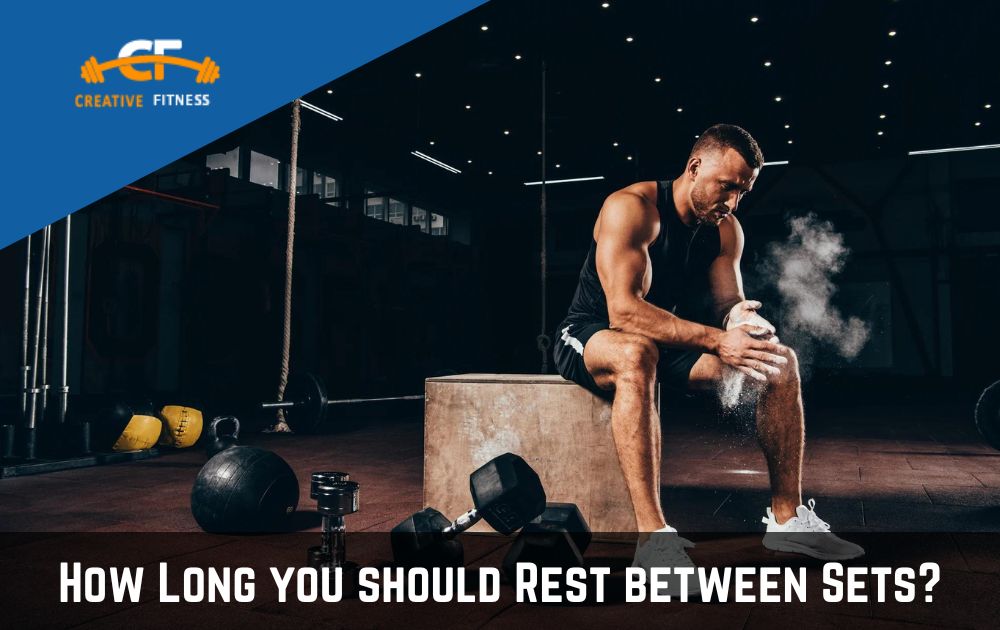How Long you should Rest between Sets? | Comprehensive Guide
Picture this: You step into the gym, fueled by the desire to sculpt your body and achieve new heights of strength. As you prepare to embark on your fitness journey, a burning question arises: How long should I rest between sets?
For ages, gym-goers have been perplexed by the question of rest intervals during long pre-workout sessions. Today, we will delve into the realm of rest intervals to uncover the secrets of muscle growth, hypertrophy, weight loss, and overall performance. So, grab your water bottle, lace up your trainers, and let’s embark on this exhilarating quest together.
How Long You Should Rest Between Sets – All Details 2023:
Here are some of the major things that you need to understand before going into further detail about this specific topic. So, be sure to read all about them on this list and then share your experience with me through the below comment box.
1. Understanding the Science:
To grasp the importance of rest between sets, we must first acknowledge the intricate mechanisms of muscle growth. When we engage in resistance training, tiny tears occur in our muscle fibers.
These micro-injuries act as signals for our bodies to repair and rebuild the muscles, leading to growth and increased strength. Rest periods between sets play a vital role in this process.
2. The Quest for Muscle Growth:
If your primary goal is muscle growth (hypertrophy), it’s essential to find the optimal rest time that allows for maximum recovery and subsequent exertion. Research suggests that rest intervals of around 1-2 minutes strike a balance between allowing sufficient recovery while maintaining a high level of intensity.
Moreover, This timeframe allows your muscles to replenish energy stores and remove metabolic waste, setting the stage for the next set of exercises.
3. The Weight Loss Journey:
For those on a weight loss journey, rest periods take on a slightly different role. Shorter rest intervals of 30 seconds to 1 minute can keep your heart rate elevated and promote calorie burning.
By minimizing rest time, you can transform your workout into a high-intensity interval training (HIIT) session, which is known for its potent fat-burning effects. However, be mindful that shorter rest periods may impact your strength and power output during subsequent sets.
4. The Impact of Exercise Type:
The type of exercise you engage in also influences the ideal rest time. Compound movements, such as squats, deadlifts, and bench presses, recruit multiple muscle groups and typically require longer rest periods of 2-3 minutes.
These exercises demand greater effort and place more significant stress on your muscles. In contrast, isolation exercises that target specific muscle groups, such as bicep curls or leg extensions, may allow for shorter rest intervals of 1-2 minutes.
5. Exploring the Myth of No Rest:
Now, let’s address the notion of eliminating rest time between sets altogether. While it may seem tempting to keep pushing without breaks, it’s crucial to understand the limitations. While there are training techniques like supersets and drop sets that involve minimal rest, these should be used strategically and sparingly.
Overdoing it can lead to premature fatigue, compromising your form, and increasing the risk of injury. Balancing intensity with adequate rest is key to sustainable progress.
6. The Role of Pre-Workout:
Ah, the beloved pre-workout supplement, the elixir that fuels our workouts. You may wonder how its duration factors into the equation. Typically, the effects of pre-workout last for one to three hours, depending on the specific product and your body’s response.
Furthermore, It provides an initial surge of energy and focus, which can enhance performance during your workout. However, it’s important to note that pre-workout is not a substitute for proper rest and recovery. It’s merely a temporary boost, and its effects will eventually fade.
7. The Journey to Finding Your Sweet Spot:
As with any fitness-related question, the ideal rest time between sets is highly individualized. It’s essential to listen to your body, experiment, and make adjustments based on your goals and personal response.
Some individuals may thrive with shorter rest periods, while others may require longer breaks. Take note of how your body feels during different rest intervals and observe the impact on your performance and recovery.
8. Resting Time & Body Optimization:
Keep in mind that progress in your fitness journey is not solely determined by the clock ticking away during rest periods. It’s about finding the perfect balance that optimizes your performance while preventing excessive fatigue.
Remember, the goal is to challenge yourself while allowing enough time for your muscles to recover and adapt.
9. What to do in Resting Intervals?
Incorporate periods of active recovery during your rest intervals. This could involve stretching, foam rolling, or performing light cardiovascular exercises to promote blood flow and aid in the removal of metabolic byproducts.
These active recovery techniques can enhance your overall recovery process and prepare your muscles for the next set.
10. Mental Rejuvenation & Rest:
Don’t underestimate the power of mental rejuvenation during rest periods. Take a few moments to focus on your breathing, clear your mind, and visualize success. Use this time to recharge your mental energy and approach each set with renewed determination and focus.
Lastly, don’t be afraid to seek guidance from fitness professionals or trainers who can provide personalized advice based on your specific goals and needs. They can help tailor your rest periods to align with your training program and ensure that you’re making the most of your time in the gym.
Also Read: How to Get More Vascular?
Frequently Asked Questions:
According to the National Strength and Conditioning Association’s book, “Essentials of Strength Training & Conditioning,” two to five minutes between sets is optimal for increasing strength and power. Between sets, 30-60 seconds of rest are ideal for increasing hypertrophy (muscle growth).
How Long You Should Rest Between Sets? It is not necessary to rest too much between sets if you still have time to complete your workout. The answer would not be two minutes, even if there were. It is advisable to rest for two minutes between sets.
There is even the possibility of injury as a result of this. You should not exercise your legs for five days in a row, as your body requires rest, so stick to three days with recovery time in between workouts.
It is important to note that despite the intensity of his leg training, Arnold usually kept his rest periods between sets short, not exceeding one minute. The result was a “flushing” effect, maintaining maximum blood flow to the muscles throughout the session.
Final Verdict:
How Long You Should Rest Between Sets? The question of how long to rest between sets is multifaceted and depends on various factors such as your goals, exercise intensity, and individual response.
Experimentation and self-awareness are key to finding the optimal rest intervals that maximize muscle growth, support weight loss, and enhance overall performance. Embrace the journey of self-discovery, and let the power of rest propel you toward your fitness aspirations.

Drew Mathews is a well-known fitness writer who has contributed to the industry for several years. His vast knowledge and expertise are shared with his readers on CreativeFitness.com, where he writes as a fitness coach with extensive experience. Drew has been working in the fitness industry for over a decade and has acquired extensive knowledge and experience in the field.






